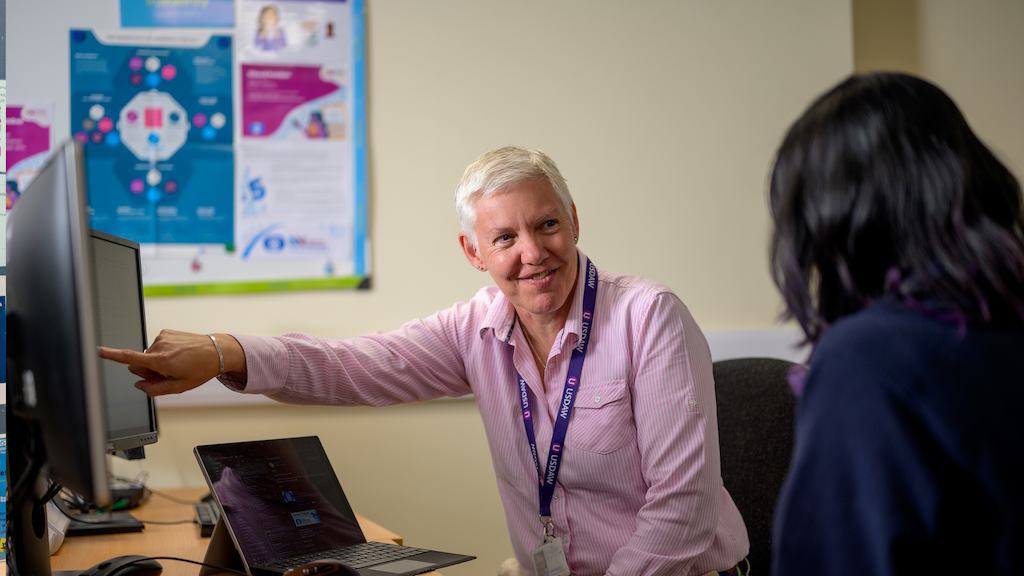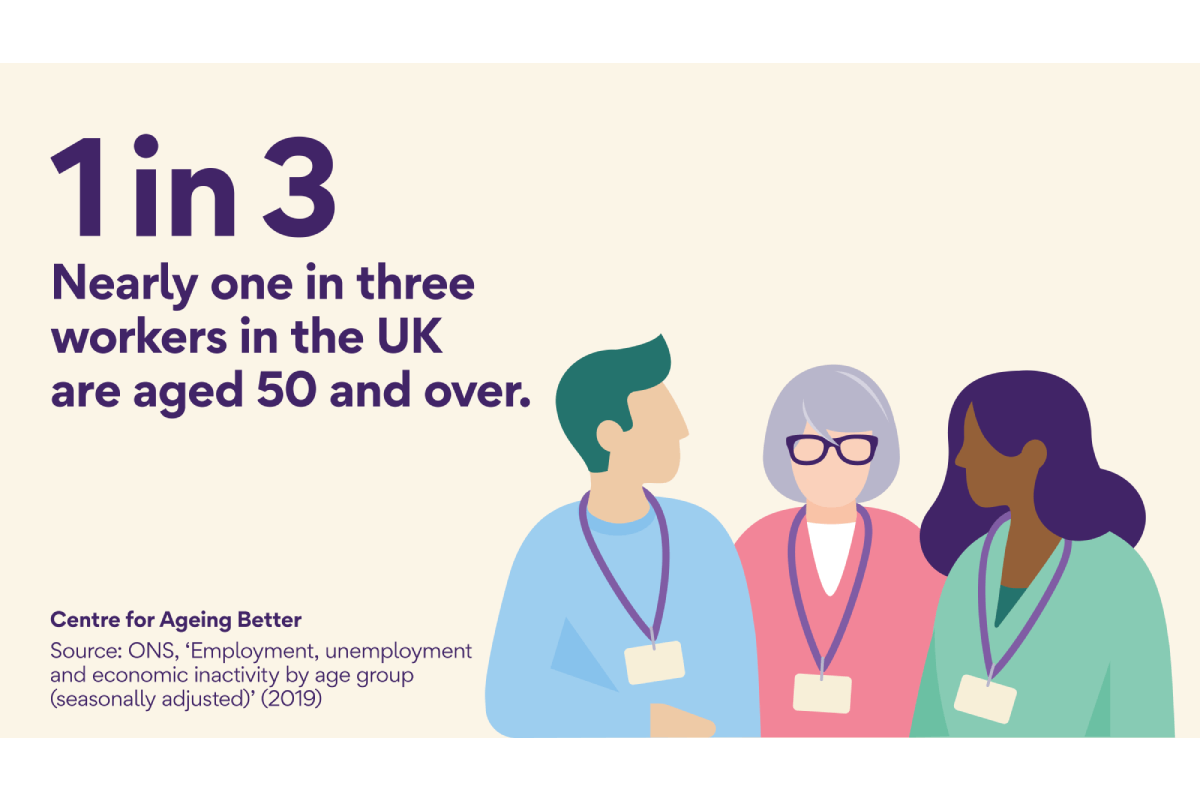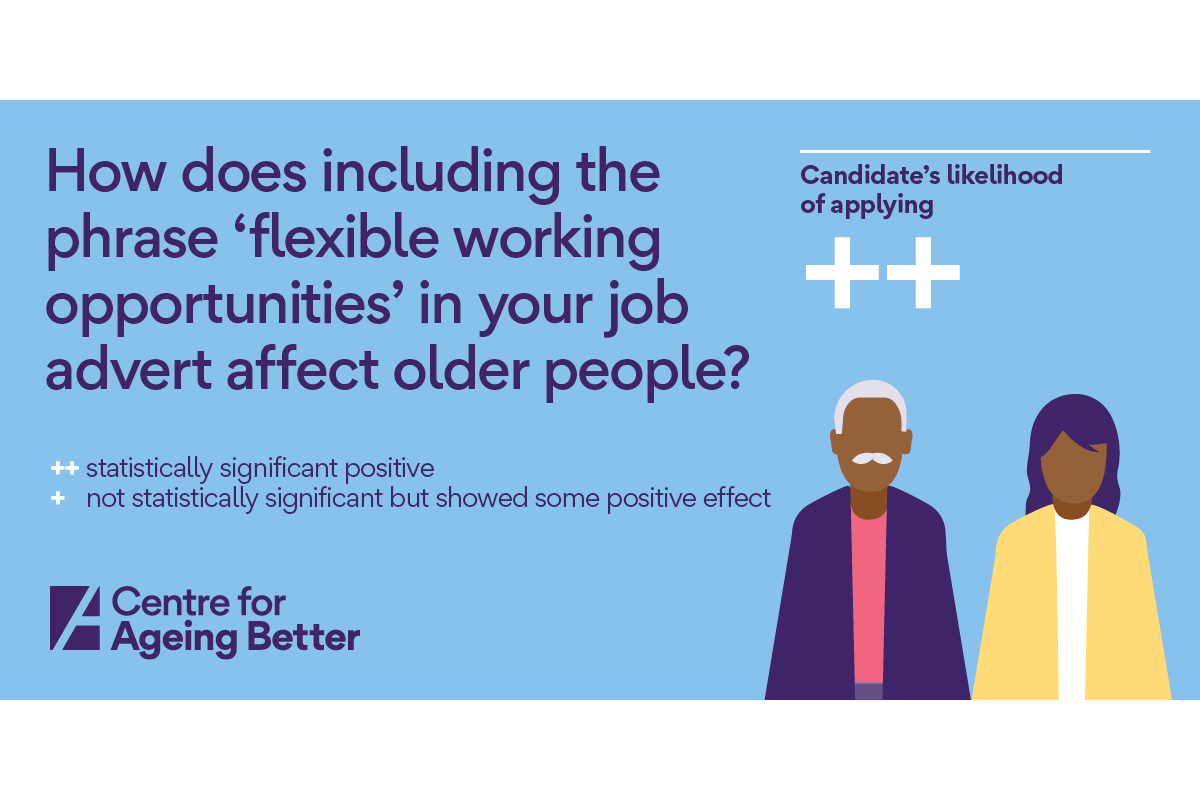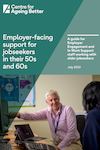Online Version: Employer-facing support for jobseekers in their 50s and 60s
This guide highlights some of the barriers that have prevented older jobseekers from securing good opportunities and gives advice on how to better work through these

This resource is for Employer Engagement and In Work Support staff working with older jobseekers.
What we have learnt and what works well
Purpose
This resource is for employment support workers who have an employer-facing role. It highlights some of the barriers that have prevented older jobseekers from securing good opportunities in the past, and which persist today. Support workers are uniquely placed to develop productive relationships and collaborate with local employers, whilst often also providing individual support. The resource suggests positive steps that can be taken to develop a three-way relationship between jobseeker, support worker and employer, with links to a range of helpful tools and resources.
Context
Age is one of the protected characteristics within the 2010 Equality Act, yet age discrimination continues to have a negative effect on people, the economy and society as a whole. Being aware of this and reframing conversations and methods of engagement can help make positive changes for all involved. Whilst we accept that societal attitudes to ageism will not improve immediately, there are often small changes that can make a significant difference in enhancing recruitment and employment practices for older workers.
Age diversity within the workforce brings huge opportunities for employers. Older workers can offer vital knowledge and skills, but often they do not get as far as interview, being eliminated at the shortlist stage. Employers who do not recruit inclusively risk failing to draw on the experience and abilities of a significant talent pool.
One of our 'Good Recruitment for Older Workers' reports published in 2021 found that 36% of people aged 50 – 69 said that their age was a disadvantage when applying for jobs. Today many employers do not feel adequately prepared to support older workers or may be working in a way that is not conducive to employing or retaining older employees. Many older workers face barriers to staying in work, and people in their 50s and 60s who fall out of work struggle with ageism in the recruitment process.
A comprehensive and bespoke package of support for jobseekers in their 50s and 60s gives them the best chance of success in searching for a good job which is both fulfilling and realistic. The Centre for Ageing Better’s resource ‘Supporting the 50+ workforce back into employment’ details some of the elements which can positively impact this process.

Employer engagement is a key aspect of provision and the three-way relationship between jobseeker, support worker and employer is crucial to ensuring good and sustainable outcomes. We need to focus on activities that ensure customers are well prepared for recruitment processes and that employers are engaging in age friendly behaviours. This may require more flexibility in approach, but it will open opportunities to many more on your caseloads.
Half of employers (particularly large businesses and public sector organisations) have Diversity & Inclusion policies where age discrimination is highlighted. However, only 1 in 6 are ‘very likely’ to develop age-friendly policies in the next 12 months. You may find that employers feel overwhelmed by perceived requirements or that they are operating in ways that might actively discourage older jobseekers from applying for jobs or sustaining employment.
As a frontline worker, you have an important role to play in raising awareness of potential barriers and supporting employers to ensure that pathways into work for the over 50s are as clear as possible.
Employment support programmes in Germany and Switzerland have shown positive results from working with employers before and beyond the commencement of a contract. As part of ‘Perspektive 50 plus’, a scheme which ran in Germany from 2005 – 2015, employers were given tailored advice about how to integrate individual older jobseekers into the workforce. Employers were also offered intensive counselling around age-friendly employment practices, including encouraging them to invest in making changes in the workplace. The Jobcentre acted as mediator between the jobseeker and the employer which helped with a smooth transition back into the workplace. SMEs (without HR functions) in particular benefited from the Jobcentre support.
This was not limited to identifying candidates but included other aspects such as writing job descriptions. From the jobseekers’ perspective, they benefited from a holistic and personalised approach, taking account of both life experience and socio-economic circumstances. This meant that good social and professional profiling was possible enabling an effective match with a suitable employer. The programme led to increased employment of older workers.
Of 200,000 people who were part of the programme in 2011/12, over 70,000 entered employment. It highlighted the need to maintain a lifelong learning culture which is important in increasing awareness about the benefits of retaining and recruiting older workers (Ministry of Labour and Social Affairs).
The ‘Supported employment for over 50s’ programme in Switzerland (2021 – 2024) requires the job coach to engage fully with both the jobseeker and the employer. Participation is voluntary for the jobseeker. They receive weekly sessions with a job coach, working on action planning, job searching and support with the application process. Employment needs to be found within the first 6 months and then the support continues beyond the commencement of employment with participants obliged to work with their coach once they have started work. This programme offers financial allowances and/or training measures to employers to ensure longevity of employment (State Secretariat for Economic Affairs).
Why do we need age-friendly employment?
We know that:
Things that we know that work well
Positive communication is key:
- Use of age-inclusive language in job adverts and job descriptions so that people aren’t put off applying. Language that appeals to older candidates does not deter younger applicants, so by changing the language these ads are more open to all candidates
- Advertising in places – including digital platforms – where older jobseekers would look. Sites such as Rest Less and Working Wise have jobs boards that are targeted at over 50s
- Using images in recruitment materials which include workers of all ages. Age-positive images are available via our free Image Library
- Highlighting flexible working arrangements and other employee benefits relevant to older workers such as workplace pensions and flexible working
- Supporting individuals through the process. Work on identifying and addressing internalised ageism so that people have confidence in their own abilities and employability. Ensure that people are prepared for the realities of the recruitment process and their return to work to better support sustainable employment. Think about practical interview advice, confidence building techniques, scenario planning etc so that people know what to expect and how to react

Things that don’t work so well
Loss of motivation can be caused by:
- The use of words in adverts or job descriptions such as ‘innovative’, ‘technologically savvy’ and ‘recent graduate’, or the link to specific skills required for the job, such as ‘programming skills’. This can make older workers feel that a job or employer isn’t for them
- Application processes that require a ‘full work history’ or a CV. Bespoke application forms which ask just for relevant experience to be highlighted do not give an immediate indication of age
- Jobs that specify the requirement for specific more recent formal qualifications
- Shortlisting that is biased, making assumptions about older workers based on stereotypes
- Poor interview practice that lacks diversity in terms of panel members, does not have predefined questions, and does not have a clear scoring mechanism in place. People’s assumptions and stereotypes can play a role here
- Dismissive responses demonstrated (intentionally or not) through negative body language, facial expression, tone of voice and the attitude of interviewers
What you can do
- You are best placed to support both the individuals and employers you work with. You will need to equip people with the skills to navigate their return to work and the challenges this may present.
Building strong relationships with local employers is also crucial to enabling older workers on your caseload to take up realistic and sustainable job offers. Even small changes in recruitment and employment practices can have a positive impact and improve the chances of recruitment for older workers.
You are ideally placed to signpost employers towards a range of resources designed to support the recruitment and retention of older workers.
You can also highlight any information or processes that could discourage over 50s from applying for their vacancies.
- Direct people to websites aimed at supporting older jobseekers: Rest Less has information on vacancies, career advice as well as a section on searching for age diverse employers including list of those who are currently hiring
- Provide people with resources to guide them through the recruitment and return to work process. Alongside general support, search for guides and advice targeted at people in their 50s and 60s. Examples include, Careers Can Change and Rest Less.
- Provide details of local age-friendly employers. This should give jobseekers more confidence about places being the right fit. Ageing Better’s website includes the logos of those signed up to the Age-Friendly Employer Pledge
- Personalise your approach – not all people over 50 need the same support. Think about what each person needs and responds to and frame the support in an age-inclusive way. This may mean normalising conversations around additional challenges, enabling them to speak confidently about the experience they bring and signposting to relevant support organisations or peer groups
- Acknowledging age is not about making people feel old, or about pitting different age groups against one another. You can help people feel ready for work by highlighting what they have to offer to employers, and demonstrating the benefits of good work to their personal circumstance
- Arrange age-friendly recruitment events demonstrating the range of skills and experience to local employers
- Champion the benefits of the contribution that workers in their 50s and 60s make to the workforce
- Offer a unique perspective to employers, challenging their recruitment and employment practices to ensure that they are age inclusive
- Encourage employers to implement ideas from the ‘Good Recruitment for Older Workers’ (GROW) guide produced by the Centre for Ageing Better in collaboration with the Chartered Institute of Personnel and Development (CIPD) and the Recruitment and Employment Confederation (REC). This offers advice on practical ways to make recruitment processes age-inclusive
- Offer local employers practical support with adverts and job descriptions. Giving up time to help employers rethink their marketing and how they advertise roles can encourage them to work with you and ensure they are open to candidates of all ages
- Encourage employers to consult ‘Flexible working for over 50s – A toolkit for employers’ produced by Ageing Better together with Timewise. This gives information on making flexible working available to all ages
- Discuss any reasonable adjustments that might be needed and drill down into any barriers presented, for example: cost; access difficulties; space issues; safety issues. Consider whether any of these can be addressed and overcome
- Consider an employer event or roundtable. Provide local employers with insights and support on being age-friendly and allow them to share good practice
- Ageing Better’s ‘Age-friendly Employer Pledge’ could be used as a conversation starter about the skills and experience of this group. Use it to encourage employers to commit to working better with over 50s and give the employer a chance to demonstrate their commitment to all ages. Once an employer has signed up to the pledge, you can use this as a chance to follow up with them and develop the relationship. Use our promotional postcard as a method for engaging employers.
- Promote existing good practice. Using case studies of employers in your area doing good work with over 50s can help encourage others to do the same. Think about promotion in newsletters, online, at recruitment events and in local press. Encourage employers to promote their age-friendly practices online and onsite
- Develop your own version of an age-friendly employer toolkit by adapting Ageing Better’s ‘Becoming an age-friendly employer’. You can include examples of local employers and services to make it relatable for those you want to engage
‘Age’ is not a fixed concept. Whether working with jobseekers, engaging employers or delivering in-work support, consider what age you are targeting the service to and what format is most applicable and effective. There is no ‘one-size fits all’ but there are simple changes to how we support individuals and employers that can lead to more positive outcomes.

